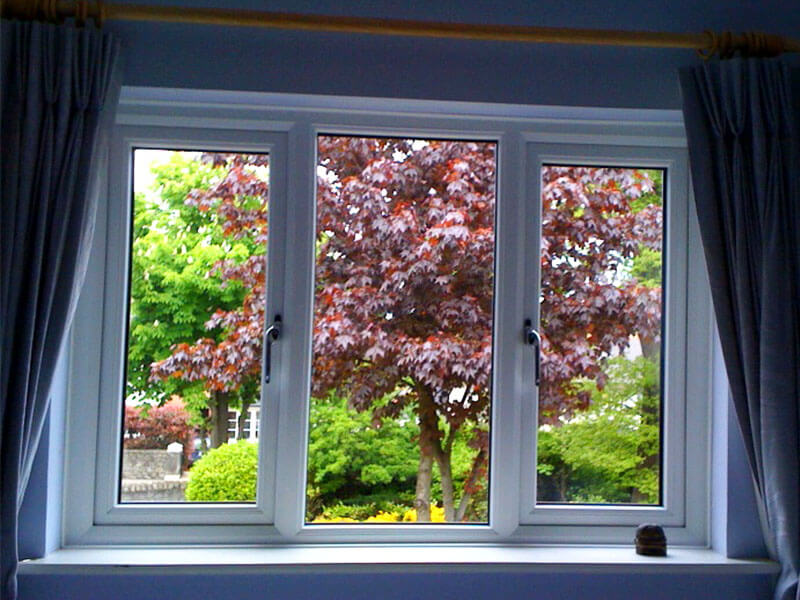In recent years, the demand for energy-efficient Windows By Ideal Glass has surged, driven by growing concerns about climate change and the need for sustainable building practices. Among the most significant advancements in window technology is the development of triple glazing, which offers superior insulation compared to traditional double glazing. This article explores the latest innovations in triple glazing, highlighting its benefits, technological advancements, and implications for energy efficiency in modern architecture.
Understanding Triple Glazing
Triple glazing involves the use of three panes of glass separated by two insulating spaces filled with argon or krypton gas. This design significantly reduces heat transfer, making triple-glazed windows more effective at maintaining indoor temperatures. The primary advantage of triple glazing lies in its ability to minimize heat loss during winter while keeping interiors cool in summer, thus enhancing overall energy efficiency.
Enhanced Thermal Performance
Recent advancements in triple glazing technology have focused on improving thermal performance. The introduction of low-emissivity (low-E) coatings on the glass surfaces has been a game-changer. These coatings reflect infrared energy while allowing visible light to pass through, significantly reducing heat loss. Modern low-E coatings are more effective than ever, enabling triple-glazed windows to achieve U-values as low as 0.8 W/m²K. This performance level is particularly beneficial in colder climates, where maintaining warmth is crucial.
Improved Acoustic Insulation
In addition to thermal efficiency, triple glazing has also made strides in enhancing acoustic insulation. The combination of three glass panes and varying thicknesses creates a barrier that effectively dampens sound transmission. This is particularly advantageous in urban environments, where noise pollution can affect quality of life. Recent innovations have led to the development of laminated glass options that further improve sound insulation, making triple glazing an ideal choice for residential and commercial buildings situated in noisy areas.

Environmental Impact and Sustainability
As the world becomes increasingly aware of the environmental impact of construction, the sustainability of building materials has come under scrutiny. Triple glazing is often manufactured using recycled materials, and advancements in production processes have reduced the carbon footprint associated with its production. Furthermore, the energy savings achieved through the use of triple glazing can lead to a significant reduction in overall energy consumption, contributing to lower greenhouse gas emissions. This aligns with global efforts to combat climate change and promotes the use of sustainable building practices.
Smart Technologies Integration
The integration of smart technologies into triple glazing systems is another notable advancement. Smart glass, which can change its properties in response to environmental conditions, is being developed to work in conjunction with triple glazing. This technology allows windows to adjust their tint based on sunlight exposure, optimizing natural light while reducing glare and heat. The combination of triple glazing and smart glass can lead to even greater energy savings and enhanced comfort for occupants.
Aesthetic Versatility
Modern triple glazing systems are designed to be aesthetically pleasing, offering homeowners and architects a variety of styles and finishes. Advances in manufacturing techniques have made it possible to produce slimmer frames that maximize the glass area, allowing for more natural light and better views. Additionally, the availability of custom colors and finishes enables homeowners to choose windows that complement their architectural style without sacrificing performance.
Cost Considerations and Return on Investment
While triple glazing typically comes at a higher upfront cost compared to double glazing, the long-term benefits often justify the investment. Homeowners can expect significant reductions in heating and cooling costs, leading to a return on investment within a few years. Additionally, many governments and local authorities offer incentives for energy-efficient upgrades, further offsetting the initial costs. As energy prices continue to rise, the economic rationale for investing in triple glazing becomes even more compelling.
Installation and Maintenance
The installation of triple glazing requires careful consideration to ensure optimal performance. Proper sealing and framing are essential to prevent air leaks and maximize insulation. Homeowners should work with certified professionals who are experienced in installing triple-glazed windows to achieve the best results. Maintenance is relatively straightforward, as modern triple glazing systems are designed to be durable and resistant to weathering. Regular cleaning and inspection can help maintain their performance over time.
Conclusion
The advancements in triple glazing technology represent a significant leap forward in the quest for energy-efficient building solutions. With enhanced thermal performance, improved acoustic insulation, and the integration of smart technologies, triple glazing offers a versatile and sustainable option for modern architecture. As the construction industry continues to evolve, the adoption of triple glazing is likely to become more widespread, contributing to energy savings, reduced environmental impact, and improved quality of life for occupants. In a world increasingly focused on sustainability, triple glazing stands out as a demonstrable advance that meets the demands of both consumers and the planet.




